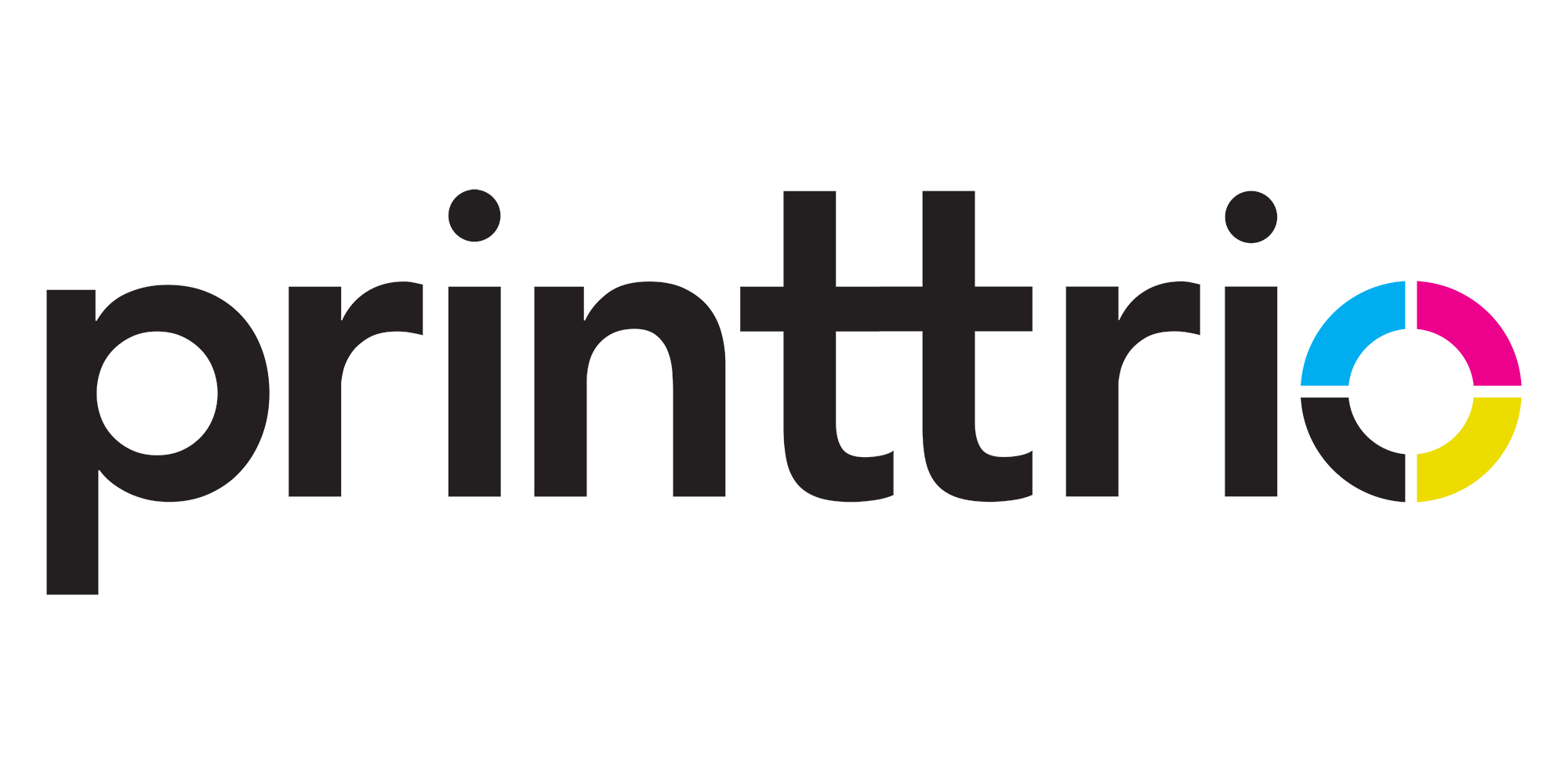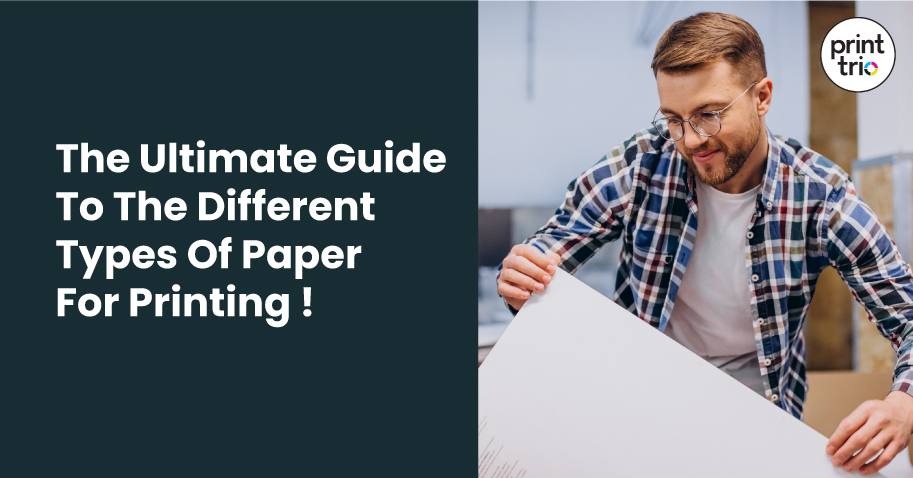You can choose from a variety of paper types for your projects. Composition, design, purpose, and even weight and thickness differ. Each one provides you with unique design options for your print. As a result, each form is thrilling in its own right. Every printing requirement has a particular sort of paper ideal for the job. With so many types and sizes of paper on the market, knowing which ones will work with your printer and which ones are best for a specific project can be challenging.
Even after you’ve mastered the various sorts and sizes of paper, there are a variety of coatings and weights to pick from. Read our ultimate guide to printer paper if you have a specific print job in mind and require paper advice or if you want to be more educated for future assignments.
Processing of Printing Paper
The papermaker’s processing processes can give the paper of the same grammage a higher density, resulting in a thinner sheet, or a lower density, resulting in a thicker sheet.
Wood fiber content: paper is manufactured by compacting tree fibers obtained through chemical and mechanical (cellulose) (wood pulp). The thickness of the report can be increased if the wood fiber content is high.
Additives: Some papermakers add various compounds to the pulp to reduce the use of cellulose and generate a unique aesthetic and tactile impact. This includes our environmentally friendly Laguna paper, which is manufactured from seaweed from the Venice Lagoon, and other varieties of environmentally friendly paper made with organic leftovers from oranges, coffee, maize, and olives.
Why is the Weight of the Paper Significant?
Every product has a recommended weight, whether printing business cards or books or creating an advertising display or a brochure. Choose the wrong sort of paper for your graphic design or publishing project. The result might be disastrous: for example, if you choose a catalog with a low grammage, the pages will be too transparent, allowing you to see the images printed on the back.
The suggested paperweights for each product category are listed on the Pixartprinting website. For example, we recommend a grammage of 280, 300, or 350 gsm for printing your business cards, though you can choose from the other available weights. You can get Pixartprinting’s Paper Sample Pack online if you’d like to feel the different varieties of paper for yourself.
Paper (90 gsm)
The 90-gsm paper is classified as uncoated, and it is a natural, wood-free paper that has not been treated with chemical chevalier chevalier chevalier chevalier chevalier chevalier chevalier chevalier chevalier chevalier chevalier chevalier chevalier cheval It’s perfect for printing enormous amounts of text and producing a thin and light printed page. It comes in white or ivory and can be used to print documents or headed paper on the inside pages of books.
Paper (130 gsm)
Paper with a grammage of 130 gsm is ideal for printing glossy magazines, brochures, posters, and folding flyers and is suitable for reproducing high-quality color photos. It has a matte or glossy surface and is relatively resistant to aging.
Paperweight: 170-gsm
This lightweight paperboard has a nice texture and outstanding color representation, making it suitable for catalogs, presentations, certifications, and posters. Depending on the type of paper, it can be coated, environmentally friendly, or recycled, and given a gloss, satin, or matte finish.
Paper (350 gsm)
Business cards, book covers, presentation folders, and invitation cards are suitable for this semi-rigid paperboard. Its thickness guarantees that it is both strong and long-lasting.
Paper 380 gsm
Packaging, hard book covers and folders, counter displays, and product tags are all cardboard. It is hugely shock resistant and dent-resistant.
Specifications for Printer Paper
Aside from different types of printer paper, there are a few standard specifications you can use to distinguish between different sorts of print materials. You can find the exact medium you need for any printing operation by understanding what differentiates the various types of sheets. Some paper kinds may have overlapping characteristics or values, and the only way to tell the two apart is to check these additional specifications.
Size:
To say there are many different sizes of paper is an understatement. Paper sizes are first compared by size categories, such as A or C, and then further divided within those ranges, with distinctions like A4 and C3. A4 paper is the most popular size, and many people assume it to be standard printer paper. C sizes are used in envelopes and are relatively uncommon. The paper gets more prominent as the number gets smaller in both dimensions. A1 is the largest, and A10 is the smallest, for example.
Weight:
While some laser paper could legally be classified as multipurpose or copy paper, there are still significant distinctions. Multipurpose paper is usually thinner and less expensive than laser paper or any other substance. This is the type of paper you’ll find in the office in a big box next to the printer. Copy paper has become a popular choice among businesses since it is a cost-effective alternative to various other paper kinds. One disadvantage of multifunctional paper is its poor color fidelity and difficulty handling significant amounts of ink on a single page.
Opacity:
The opacity of paper, often known as transparency, is a measurement of how much can be seen through a sheet of paper. This is calculated in percentages, with 0% representing see-through materials like tracing paper. When printing double-sided, it’s very crucial to think about opacity because the ink can flow through and destroy the document.
Ream:
This specification pertains to the quantity of paper you will receive rather than the type of paper. Most printer paper is offered in reams, which are 500-sheet packs. Small offices or home users can purchase a single ream, whereas enterprises can purchase cases containing multiple reams. The larger orders may even arrive in seamless containers holding over 2000 sheets of unsorted paper.
Material:
While most papers will be composed of wood fibers, other materials such as plastic or synthetic materials are also available. These technical papers might be utilized in situations where durability is required or for other niche applications. Another substance that is rapidly gaining favor is recyclable or environmentally friendly paper. These papers can be constructed primarily of recycled materials, sustainably sourced wood fibers, or biodegradable solutions, which can help your company lessen its environmental impact.
Brightness:
While most papers will be composed of wood fibers, other materials such as plastic or synthetic materials are also available. These technical papers might be utilized in situations where durability is required or for other niche applications. Another substance that is rapidly gaining favor is recyclable or environmentally friendly paper. These papers can be constructed primarily of recycled materials, sustainably sourced wood fibers, or biodegradable solutions, which can help your company lessen its environmental impact.
Uncoated versus coated:
Coated or uncoated paper is available in both glossy and matte finishes. Because of its application in high-end photo printing, glossy coated paper is more common. UV, varnish, and aqueous are the three primary forms of paper coatings. Varnish coating is a cost-effective but less durable solution for many ordinary workplace papers. UV coatings are the best quality and consequently cost the most. This coating is utilized in high-end photo printing and various other applications. Aqueous coating protects goods from fingerprints and other harmful markings, allowing them to be carried more readily. Because aqueous coatings are water-based, they are the most environmentally friendly solution.
Color:
The color of the paper is the most accessible specification. While white and off-whites are ubiquitous in the office, numerous paper colors come in an almost infinite variety. Most other paper varieties, such as glossy, matte, coated, and uncoated, are available in various colors. Color paper is fantastic for making a statement on bulletin boards or any other occasion where your message needs to stand out.
Selecting the Best Paper
Now that you’ve learned about the various varieties of paper and their differences, it’s time to pick the ideal one for you. Consider the type of document you want to print and how you want the final product to look. Then, establish which kinds of paper your printer supports and choose the most acceptable choice that satisfies both specifications. If you locate an article with a coating or feature you like, keep in mind that other varieties of that paper may perform better with your printer.
Different Printing Paper Types
Choosing the appropriate type of printing paper can make a tremendous difference in the quality of your prints. While many people blame the printer for poor performance, the fundamental problem could be with the paper or ink cartridges you use. After all, a laser printer isn’t likely to produce high-resolution images, especially when using matte paper. Please scroll down to learn about the many varieties of printing paper and their main applications.
Paper for Inkjet Printers:
As the name implies, Inkjet printer paper is made to function with inkjet printers. Several types of inkjet photo paper, business card paper, glossy inkjet printing paper, and more will influence the style of printout you want to accomplish. While various types of printing paper will function with inkjet printers, it is always ideal to use a form that has been created specifically for inkjet printers.
Paper for Laser Printers:
Laser printer paper is also recommended for laser printers. Laser printing paper is primarily used for business printing and high-volume document printing. While there may be no difference between laser and inkjet paper, there is one significant distinction. Laser printers and copiers use toner cartridges and ink that stays on the paper’s surface, whereas inkjet printers use ink that soaks into the paper. Inkjet printing paper can withstand substantially more moisture as a result.
Paper Matte:
Flat paper sheets have a smooth and textured appearance and are one of the most commonly used varieties of printing paper. You’ll want a little gloss for the intended effects, just like a matte photo; therefore, matte photo paper is the perfect match. The capacity to produce high-quality double-sided printouts is a significant advantage of matte photo paper. Half-covered prints will not appear on the opposite side due to the brightness of the paper, which could be devastating for your presentation.
Paper with a sheen:
Glossy printing paper, typically utilized for images rather than written documents, gives your product the maximum sheen. When paired with long-lasting inks and cartridges with good color depth, Glossy printing paper will produce crisp, vibrant prints. The glossy surface absorbs ink, giving images more clarity, which is not a feature of standard matte printing paper.
Paper: Card Stock
Card stock paper is the best choice for scrapbooking or printing business cards because it is strong and durable. When you go to a printing shop to get your business cards printed, card stock paper is most usually used because of its durability and thickness. Card stock paper holds its shape even in the harshest of environments, such as in your pockets or wallets, thanks to its excellent durability.
Paper for Resumes:
Resume paper was formerly the go-to choice for printing out your resume to hand into organizations, but it is no longer the case thanks to digital CVs. This gave your resume a weighted impression as a somewhat heavier paper type, making it stand out from the crowd.
Conclusion:
It’s critical to have your papers printed by a professional printing company, regardless of the paper stock you use. PsPrint, for example, combines cutting-edge offset and digital printing equipment and vibrant, environmentally friendly soy-based inks to make your colors pop. The last thing you want is for your beautiful design to be ruined by poor printing, so pair the correct paper with affordable superior printing to bring your ideas to life.


The Ultimate Guide to the Different Types of Paper for Printing